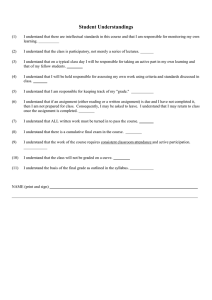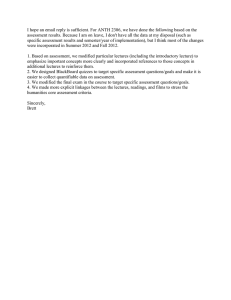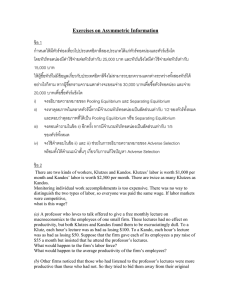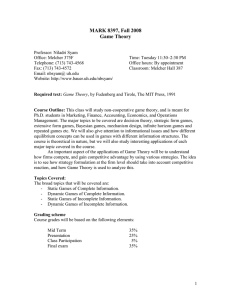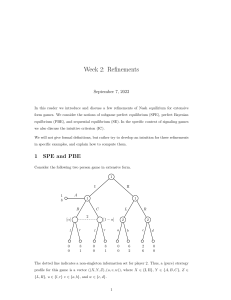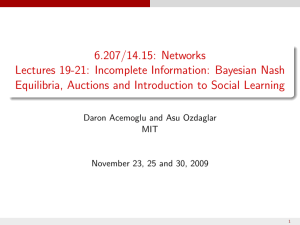14.122 Fall 2002 Microeconomic Theory II
advertisement
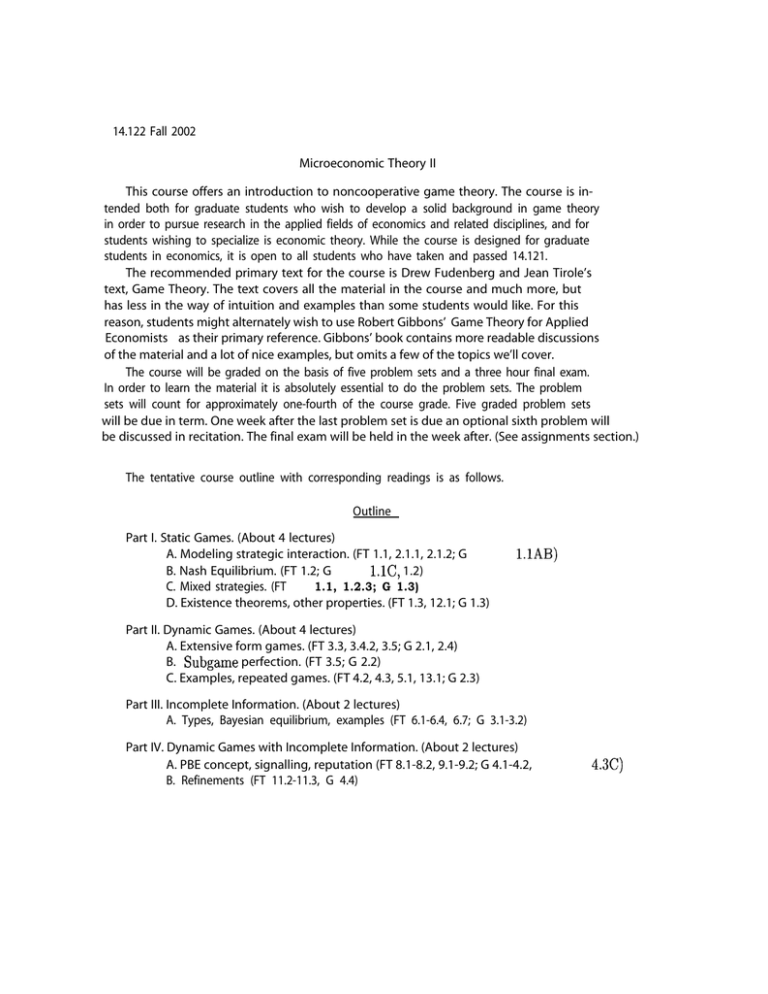
14.122 Fall 2002 Microeconomic Theory II This course offers an introduction to noncooperative game theory. The course is intended both for graduate students who wish to develop a solid background in game theory in order to pursue research in the applied fields of economics and related disciplines, and for students wishing to specialize is economic theory. While the course is designed for graduate students in economics, it is open to all students who have taken and passed 14.121. The recommended primary text for the course is Drew Fudenberg and Jean Tirole’s text, Game Theory. The text covers all the material in the course and much more, but has less in the way of intuition and examples than some students would like. For this reason, students might alternately wish to use Robert Gibbons’ Game Theory for Applied Economists as their primary reference. Gibbons’ book contains more readable discussions of the material and a lot of nice examples, but omits a few of the topics we’ll cover. The course will be graded on the basis of five problem sets and a three hour final exam. In order to learn the material it is absolutely essential to do the problem sets. The problem sets will count for approximately one-fourth of the course grade. Five graded problem sets will be due in term. One week after the last problem set is due an optional sixth problem will be discussed in recitation. The final exam will be held in the week after. (See assignments section.) The tentative course outline with corresponding readings is as follows. Outline Part I. Static Games. (About 4 lectures) A. Modeling strategic interaction. (FT 1.1, 2.1.1, 2.1.2; G B. Nash Equilibrium. (FT 1.2; G l.lC, 1.2) C. Mixed strategies. (FT 1.1, 1.2.3; G 1.3) D. Existence theorems, other properties. (FT 1.3, 12.1; G 1.3) l.lAB) Part II. Dynamic Games. (About 4 lectures) A. Extensive form games. (FT 3.3, 3.4.2, 3.5; G 2.1, 2.4) B. Subgame perfection. (FT 3.5; G 2.2) C. Examples, repeated games. (FT 4.2, 4.3, 5.1, 13.1; G 2.3) Part III. Incomplete Information. (About 2 lectures) A. Types, Bayesian equilibrium, examples (FT 6.1-6.4, 6.7; G 3.1-3.2) Part IV. Dynamic Games with Incomplete Information. (About 2 lectures) A. PBE concept, signalling, reputation (FT 8.1-8.2, 9.1-9.2; G 4.1-4.2, B. Refinements (FT 11.2-11.3, G 4.4) 4.3C)
